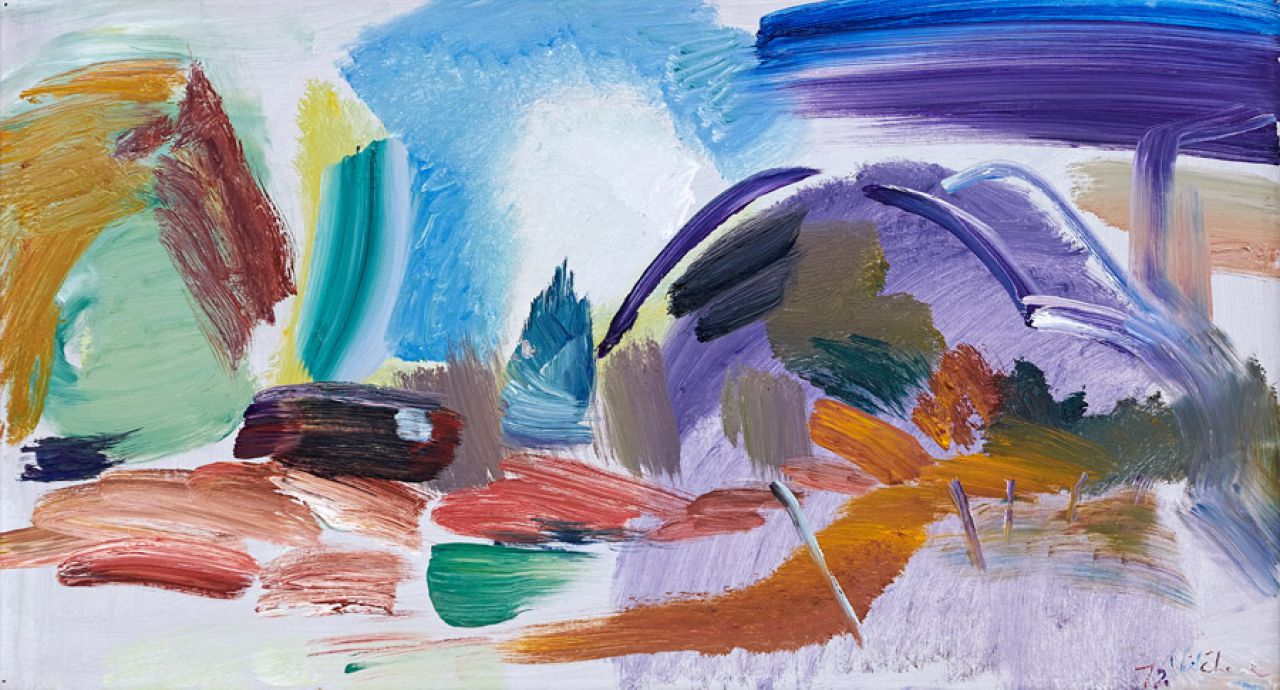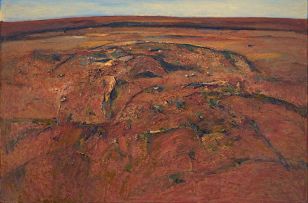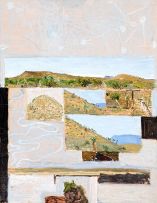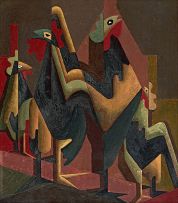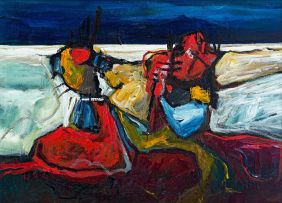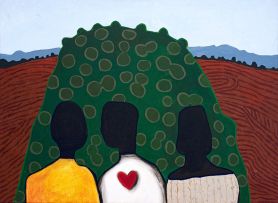Landscape with a caravan and apple trees
Ivon Hitchens
Incl. Buyer's Premium & VAT
About this Item
signed and dated 72; signed, dated 1972, inscribed with the title, dimensions and "Greenleaves, Petworth, Sussex" on a label adhered to the reverse
Notes
In 1940, the English painter Ivon Hitchens moved with his family into a caravan on six acres of land in Petworth, Sussex, after his home in Hampstead, London, had been bombed in the Blitz. There, he had been peripheral to a group of modern artists, including Barbara Hepworth and Henry Moore. After he moved to the countryside, however, he developed largely in isolation, devoting the next 40 years to painting the surrounding landscape.
Hitchens is widely regarded as one of the best and most original British landscape painters of the last century. As The Oxford Dictionary of Art notes: "He created a highly distinctive style ... in which broad, fluid areas of vibrant colour, typically on a canvas of wide format, evoke but do not represent the forms of the English countryside that were his main inspiration."1
Landscape with a caravan and apple trees, painted when Hitchens was almost 80, features the particularly bold brushstrokes and bright colours that characterised his later work. Clear, light yellows, greens, purples and blues punctuate the earthier tones that were more typical of his earlier work.
Although Hitchens' work is not strictly tied to appearances, representing instead his experience of the landscape, his paintings are never far from representational. In Landscape with a caravan and apple trees, trees are discernible in the vertical strokes that run across the centre of the canvas, and a shape suggesting a caravan appears to the left of them. Other shapes and colours evoke fields, hills and sky. The most literal representation appears in a diagonal path and row of leaning fence posts in the bottom right quadrant.
Compositionally, while the sky seems to launch the eye off the canvas to the top right, the path guides it back and around and to the front and centre of the piece. Hitchens' biographer Peter Khoroche noted that, "In the landscapes the eye is allowed to escape down one or more vistas, out of the painting, for a rest before returning to explore the picture pattern."2
This sense of movement introduces a temporal dimension to these landscapes. Rather than gazing into their depths from a static perspective, the viewer's eye moves across its surface, as if "reading" it. He is quoted in Khoroche's monograph: "The intention is that the spectator's eye can travel along these areas, from floe to floe, over the picture surface instead of being engulfed or drowned in a morass of paint representing or aping realism."3
The colour harmonies and rhythms of the brushmarks also suggest musical abstraction. Indeed, Hitchens said his landscapes should be "listened to". "I should like things to fall into place with so clear a notation that the spectator's eye and 'aesthetic ear' shall receive a clear message, a clear tune," he wrote.4
He eventually moved out of the caravan and built a house, known as Greenleaves (which appears on the label affixed to the present work). An example like this, alluding to the caravan he lived in when he first moved to Petworth, adds a personal, reflective note to the history of modern British romanticism.
1. Ian Chilvers. (2004) The Oxford Dictionary of Art, Oxford: Oxford University Press. Page 340.
2. Peter Khoroche. (1990) Ivon Hitchens, London: Lund Humphries. Page 73.
3. Peter Khoroche. (1990) Ivon Hitchens, London: Lund Humphries. Page 120.
4. Ivon Hitchens. (1956) 'Notes on Painting', Ark: Journal of the Royal College of Art, No.18.
